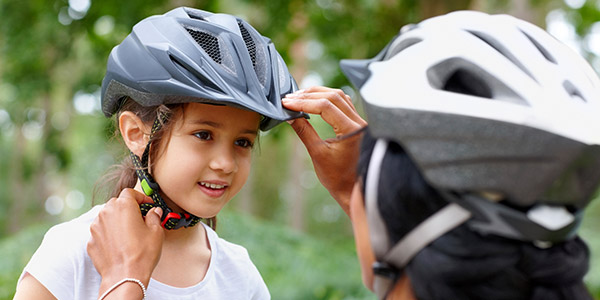That first bike with the shiny training wheels and colorful paint job is more than the stuff of happy childhood memories. According to John Oberholtzer, M.D., a pediatrician at Sutter Davis Hospital, father of four and cycling enthusiast, learning to ride a bike can help your child get on the road to a lifetime of healthy, rewarding exercise.
However, as with any sport, cycling has some risks. According to the National Highway Traffic Safety Administration, bicycle injuries are the No. 1 sport injuries leading to emergency room visits for children ages 5 to 14. To minimize these risks, Dr. Oberholtzer offers this advice by age.










